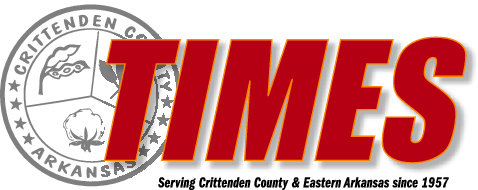JUKEBOX HERO
‘My whole world is the physical media,’ says Minnesota shop owner
By RICHARD CHIN
The Minnesota Star Tribune (TNS)
MINNEAPOLIS — Dan Coulter was 12 years old when he bought his _rst jukebox.
The Bloomington kid wasn’t very good in academics but he liked music and he was good with his hands.
When he heard that a friend had a busted jukebox from the 1940s sitting in his family’s basement, he bought it for $25. He took the 300-pound machine apart to haul it home, where he set about restoring it.
He still remembers the _rst song it played when he was able to get it working again. He dropped in a quarter and Rosemary Clooney began to sing “Come On-A My House.”
Coulter sold the jukebox to an antique store. With the money, he bought two more jukeboxes.
Thus started a 50-year career for Coulter of buying, selling, _xing and operating jukeboxes.
Now 62, Coulter is the owner of Vintage Gameroom, a two-man shop in a small strip mall in the southeastern suburb of Newport that is one of the few places in the country dedicated to jukebox repairs and sales.
He specializes in restoring massive, eye-catching, coin-operated record machines that go back to the 1940s, ’50s and ’60s.
Made by companies like Wurlitzer, Seeburg or Rock-Ola, jukeboxes featured spinning lighting effects and cabinet designs combining chrome, wood, curved glass and colored translucent plastics inspired by art deco style, the ashy cars of the era or the early space age.
Inside was a mechanical DJ with a robotic arm plucking a record from a spinning carousel of musical discs and precisely putting it on a turntable.
Originally the songs were on 78 RPM shellac resin records, then 45 RPM vinyl singles and _nally CDs.
“It’s marvelous to watch. It’s a real fun piece of equipment,” Coulter said. “Not only is it a cool thing to look at, but it sounds good.”
Modern jukeboxes found in a bar or restaurant today aren’t quite the same. They’re typically space-saving, web-based, wall-mounted devices that never need to be lubricated, that have a selection of thousands of digital _les that customers can remotely _nd, choose and pay for using a smartphone app.
“My whole world is the physical media,” Coulter said. “This magical, over-the-air ethernet stuff doesn’t interest me.”
Coulter has some commercial clients who are running old-school jukeboxes in public locations, including a few in nursing homes. But most of his customers are collectors who want to have a vintage jukebox in their house.
“We concentrate on home service machines,” he said. He has a client base of about 1,800 customers spread across the Upper Midwest and a long backlog of repair jobs awaiting attention from himself or his one helper, Kim Lindstrom.
Lindstrom is a self-taught vintage electronics expert. He can work on sound equipment technology made over the decades, ranging from tube ampli_ers to transistors to digital controls. But “we don’t work on anything that’s streamed,” he said.
Lindstrom knew Coulter when they were kids. He helped him _x the ampli_ers on his _rst jukeboxes, a job he’s still doing today.
Coulter said there are not many other places where you can _nd a jukebox repairman.
“I think I’m kind of one of the last guys standing,” he said. “We’re literally a dying breed. Which is why I’m exceedingly busy. I’ve got two years of work waiting to get into the shop.”
In addition to _xing jukeboxes, Coulter can sell you one. He has a black, space-agey Rock-Ola Model 460 from the 1970s that he’s priced at $1,000.
“It’s got that ‘Star Wars’ look to it,” Coulter said.
He’s also a Rock-Ola dealer, and he can sell you a newly made Rock-Ola machine, with a retro design that plays 45s or CDs, for about $11,000.
Don’t worry if you don’t have a collection of 45s to put into the jukebox. Coulter makes sure each jukebox he sells is full of records. He has a collection of thousands of 45s stuffed into a storage closet and _lling _le cabinets.
He bought many of his old records for pennies apiece from radio stations that were closing down.
It might be more convenient to listen to music from your phone on a Bluetooth speaker. But “that’s not fun,” according to Joan Pilaczynski.
She’s the owner of a Seeburg HF100R, a high-_delity, 100-song-selection jukebox from the mid-1950s that features a large glass dome, chrome accents and an “illuminated color grille diffuser.”
“It looks cool,” said the 87-year-old Columbia Heights woman.
Her jukebox is _lled with 45s by Patsy Cline, Elvis Presley, the Rolling Stones and Steppenwolf.
“It brings back the most fantastic memories of partying. We’d always dance,” she said. “Sometimes I feel sorry for young people.”
Although a lot of Americans collect jukeboxes, there also is a high demand for them overseas. Coulter said this country’s vintage jukeboxes are popular among collectors in places where American GIs were stationed after World War II: Japan, Germany and the United Kingdom.
“The whole world is infatuated with our 1950s culture,” Coulter said. “I’d like to see the machines stay in this country. It’s an interesting part of American pop culture. It’s disappearing and it’s sad.”
After all, jukeboxes were an American invention, the product of years of inventors _guring out how to coax bar patrons to drop a coin into a machine in exchange for a song.
The earliest examples date back to coin-operated Edison wax cylinder phonographs developed in the late 19th century. Users had to use stethoscope-style listening tubes to hear the song, which probably inhibited dancing.
The 20th century brought the ampli_ed loudspeaker, the option to select from dozens of songs and dazzling designs.
“They were made in the bars to pop, to look fantastic,” Lindstrom said.
By the mid-20th century, the music machines got their name, apparently derived from the word jook or juke, Southern African American slang meaning bawdy or wild. Jukeboxes provided the music at drinking places called juke joints.
With the rise of rock and roll and the youth culture of the ’50s, jukeboxes expanded out of bars and into malt shops, diners and drugstores.
The top 40 radio format and early Hot 100 lists developed in the 1950s were inuenced by tracking jukebox plays of the most popular songs.
“People were dumping millions of coins into jukeboxes a year,” Coulter said.
Over the years, musicians ranging from Frank Sinatra to Joan Jett sang songs about listening to the jukebox.
“It’s ingrained in the culture of the United States,” Coulter said.
The heyday of the jukebox came to an end as new technology like transistor radios and cassette and CD players provided easier and more portable ways to listen to music.
But the cultural legacy of the jukebox lingers. One of the _rst mp3 devices on the market was called the Creative Nomad Jukebox.
And while most people are listening to music on their phones, country western songs are still being written today about soothing a broken heart in a bar with a sad song on the jukebox.
There’s a public, performative aspect of playing a song on a jukebox that listening to Spotify can’t capture.
When you put your money into a jukebox in a bar or restaurant, you’re telling a roomful of people that this is the music you like and you’re inviting them to listen to it.
You could be like comedian John Mulaney, who describes “the best meal I’ve ever had” when he was a kid and enraged everyone in a Chicago diner by playing Tom Jones’ “What’s New Pussycat?” 11 times in a row.
Or you could be the guy who punches the buttons for the song that gets everyone to dance.
“So when I walk away, I’m a jukebox hero because I played the song that people want to listen to,” Coulter said.
Dan Coulter looks inside a jukebox from the 1940s in the backroom of his store, Vintage Gameroom, in Newport, Minn.
Leila Navidi / The Minnesota Star Tribune / TNS


